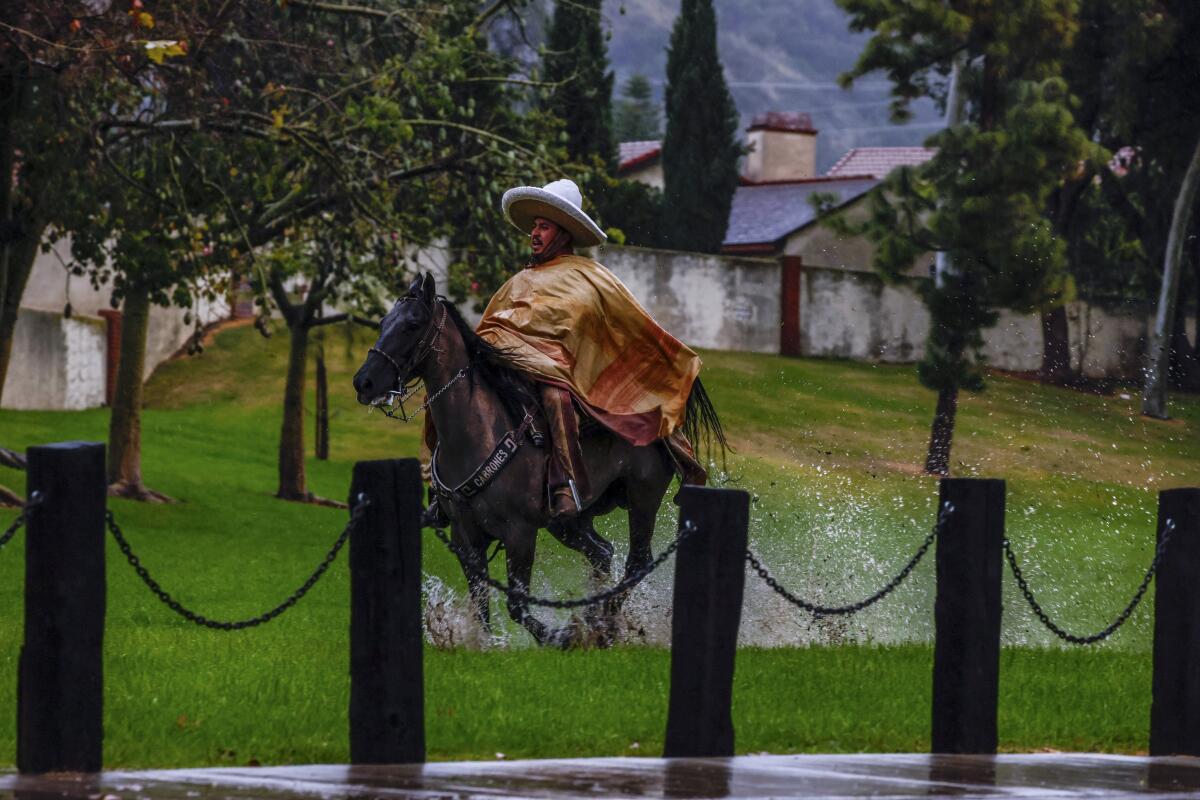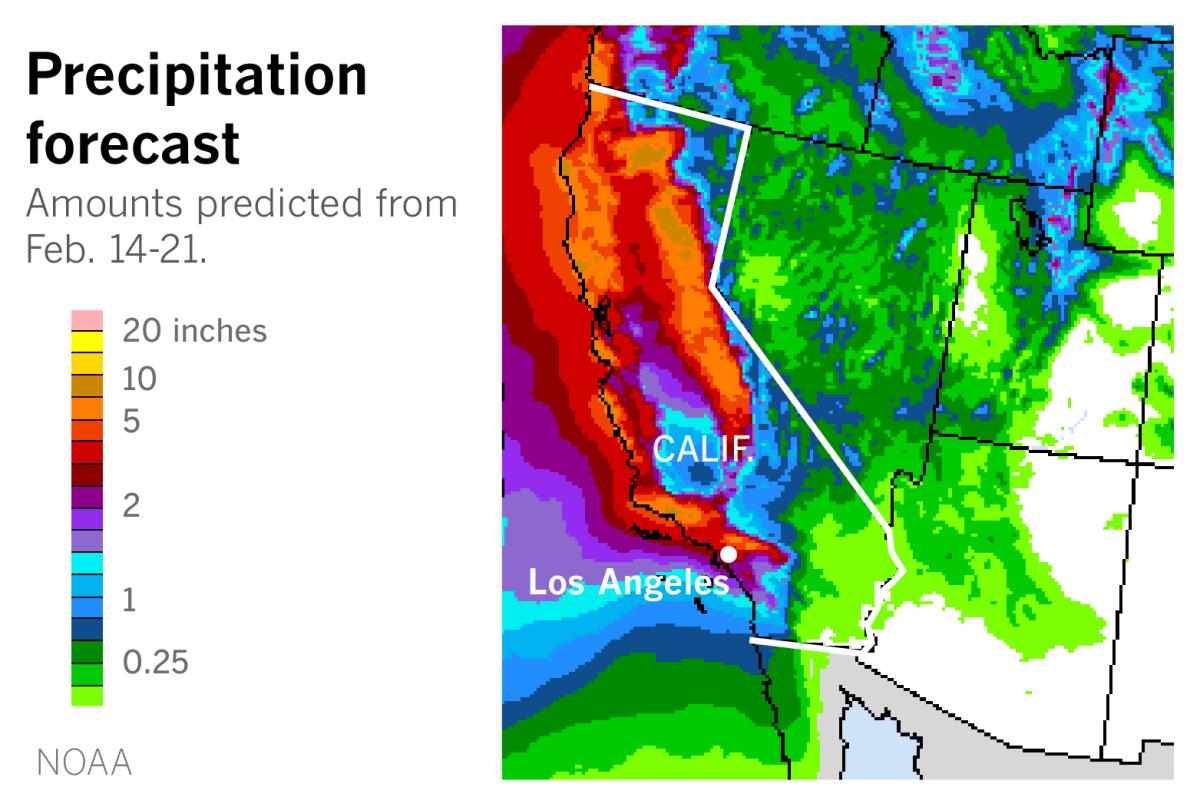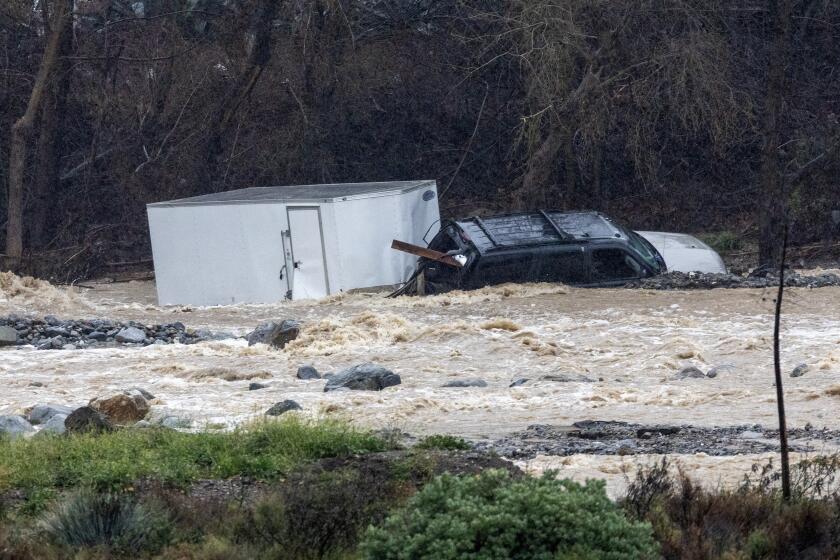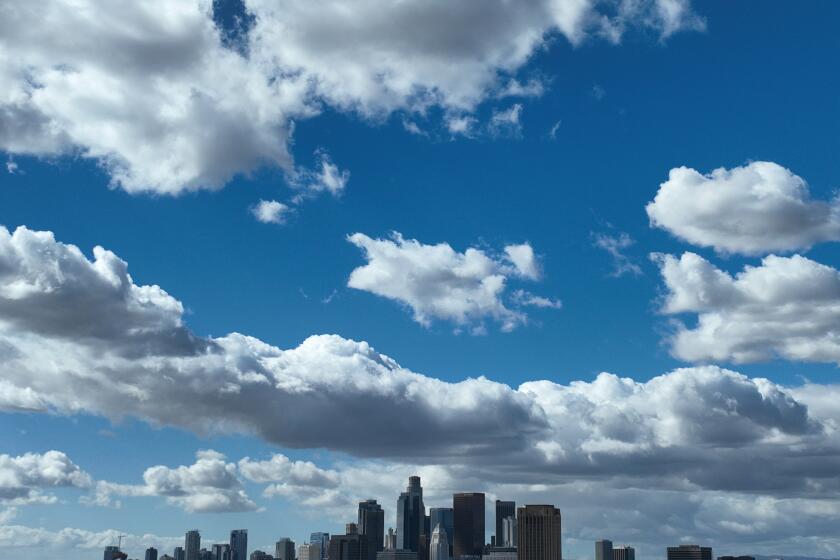After a brief reprieve more wet weather is on the way for Southern California

- Share via
Crisp morning temperatures will make way for sunny skies across Southern California this week, but don’t stash those umbrellas and rain boots away quite yet. More wet weather is on the horizon.

Temperatures throughout the week are expected to range from the mid- to upper 60s along the coast, right around normal for February, said Mike Wofford, a meteorologist with the National Weather Service in Oxnard.
An offshore flow, which keeps air moving from land to sea, will weaken in the coming days, allowing for a chilly sea breeze to sweep across the region and drop daytime high temperatures a degree or two into the mid-60s. Overnight temperatures are expected to be particularly brisk, dropping to the low to mid-40s in some areas, according to the weather service.
“It’ll be kind of chilly in the morning, but it’s going to be a pretty nice week for the most part,” Wofford said.
Forecasters anticipate a storm system will begin showering the region with rain by Sunday. It’s not clear how much precipitation it could bring, but Wofford said early estimates show anywhere from 2 to 4 inches of rain in the valley and coastal areas.
Last week an atmospheric river, brought five days of drenching rain and heavy snow to California. The storm, made more severe because of El Nino and climate change, is the largest so far in the state this winter.
Southern California rain totals from the last five days topped 14 inches in some areas, easily besting the average for the entire month of February.
Strong downpours triggered more than 500 mudslides in the city of Los Angeles alone. It damaged more than 45 homes or buildings, flooded roads, forced dozens of evacuations and knocked out power to residents, sometimes for days. Nine people died in the storm.
It’s still too early to determine what all this wet weather will mean for California’s water supply.
Recent storms have filled the state’s largest reservoirs to 118% of their historical average. Statewide precipitation is 102% of average for the date, with more than 13 inches falling since the start of the water year on Oct. 1, according to state data.
The storms also haven’t brought enough snow to replenish the Sierra Nevada snowpack, which remains a key component of the state’s water supply. Snow is anticipated in this weekend’s storm, but it’s not clear just how much, forecasters say.
There’s a 55% chance La Niña could develop between June and August, and a 77% chance it could develop between September and November, NOAA said.
The latest series of storms boosted the snowpack statewide to to 76% of average for the date. But, it remains only about halfway to its April 1 peak, according to data provided by the California Department of Water Resources.
“It’ll be a decent storm and certainly an above average storm,” Wofford said of the system moving into California over the weekend. “We’re not confident yet if it’s going to be anything like what we saw last time, but there’s some potential of that.”
More to Read
Sign up for Essential California
The most important California stories and recommendations in your inbox every morning.
You may occasionally receive promotional content from the Los Angeles Times.













